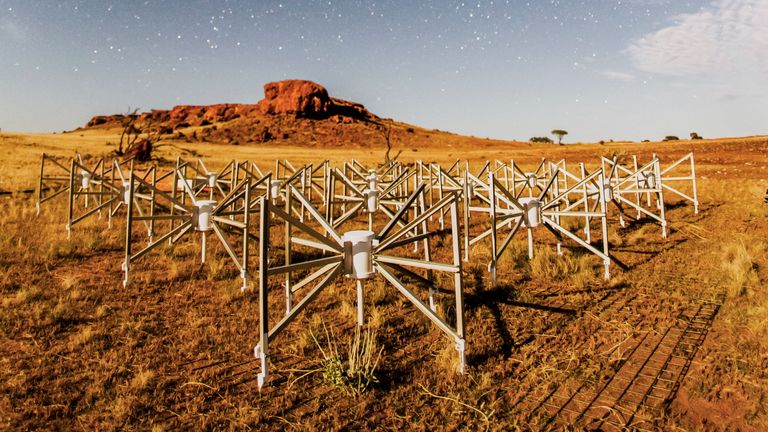The biggest explosion in the universe since the Big Bang has been discovered by astronomers.
The blast came from a supermassive black hole in the Ophiuchus galaxy cluster about 390 million light years from Earth.
Scientists say it released five times more energy than anything witnessed before and left a giant dent in the galaxy cluster.
Professor Melanie Johnston-Hollitt, from the International Centre for Radio Astronomy Research, said: “This is the most energetic outburst we have seen since the Big Bang.
“We’ve seen outbursts in the centres of galaxies before but this one is really, really massive.
“But it happened very slowly – like an explosion in slow motion that took place over hundreds of millions of years.”
Prof Johnston-Hollitt said the blast is thought to have happened between 240 million and 400 million years ago.
The explosion was so powerful it blasted a hole in the cluster plasma – the super-hot gas surrounding the black hole.
Dr Simona Giacintucci from the Naval Research Laboratory in America, who led the study, said in some ways the blast was similar to the 1980 eruption of Mount St Helens, which ripped the top off the mountain.
But she said: “The difference is that you could fit 15 Milky Way galaxies in a row into the crater this eruption punched into the cluster’s hot gas.”
Professor Johnston-Hollitt said scientists initially dismissed that the hole could have been caused by an energetic outburst because it would have been too big.
“People were sceptical because the size of outburst,” she said.
“But it really is that. The universe is a weird place.”
Astronomers only realised what had happened when they looked at the Ophiuchus galaxy cluster with four radio telescopes including the Murchison Widefield Array (MWA) in Western Australia and the Giant Metrewave Radio Telescope (GMRT) in India.
Professor Johnston-Hollitt said the finding is likely to be the first of many.
“We made this discovery with phase one of the MWA, when the telescope had 2,048 antennas pointed towards the sky,” she said.
“We’re soon going to be gathering observations with 4,096 antennas, which should be 10 times more sensitive.
“I think that’s pretty exciting.”
The discovery is published in the Astrophysical Journal.














